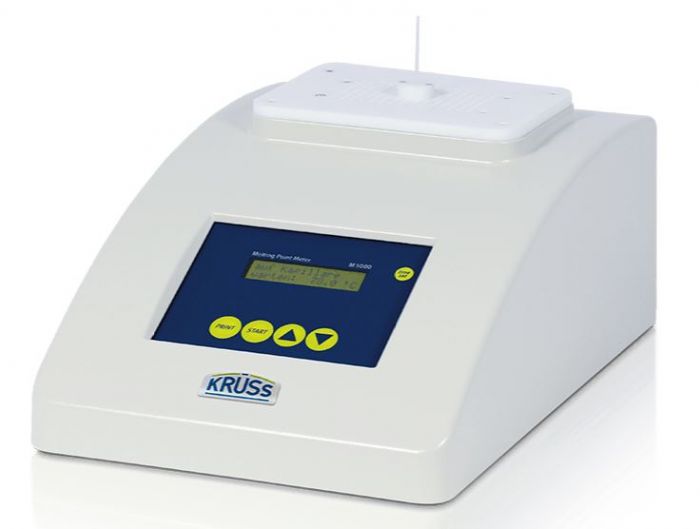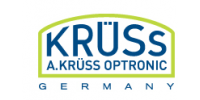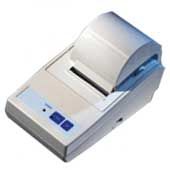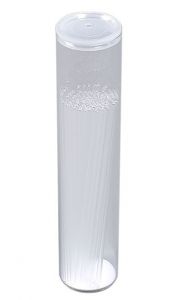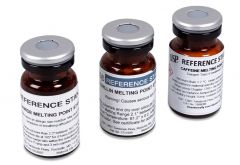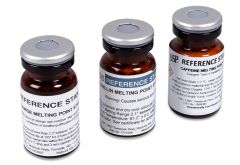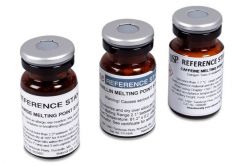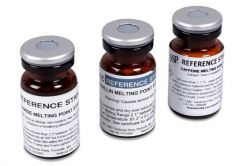- Hoge kwaliteit en uitgebreide service
- Al meer dan 100 jaar een begrip
- Een breed assortiment
Nauwkeurigheid 25–200°C/±0,3°C 200–400°C/±0,5°C
Opwarmtijd 300°C circa 4 minuten / 400°C circa 7,5 minuten
Opwarmsnelheid 0,1 °C per minuut
Geschikt voor 1 capillaire
Afmetingen (bxdxh) 220 x 340 x 150 mm
Gewicht 4,1 kg
Levering inclusief 100 capillairen
Sorry, dit product kunt u niet toevoegen aan uw winkelwagen.
| Merk | Krüss |
|---|---|
| Afscheider zuigzijde | Nee |
| Condenser uitlaat | Nee |
Kruess smeltpunt meter M5000 - Melting Point Meters
Automatic, easy melting point measurement
Advantages
- Fully automatic measuring instrument
- 1 capillary intake
- LCD display
- Alarm signal when reaching the melting point
- Fast cooling through integrated fan
- Digital display of all important data
- Display in German or English
- With RS-232 interface for printer CBM910 (not included)
- Easy-to-clean membrane keypad
- Includes protective cover and 100 capillaries
Technical data
- MEASURING RANGE 25–400 °C
- ACCURACY ±0.3 °C (25–200 °C) / ±0.5 °C (200–400 °C)
- RESOLUTION 0.1 °C
- PREHEATING RATE to 300 °C approx. 4.0 min / to 400 °C approx. 7.5 min
- HEATING RATE 1 °C min-1
- NR. OF CAPILLARIES 1
- CAPILLARY Ø 1,4 mm
- INTERFACE RS232
- IP CODE IP20
- POWER SUPPLY 90–264 V
- DIMENSIONS (W X H X D) 220 mm x 150 mm x 340 mm
- WEIGHT 4,1 kg
How does an automatic melting point meter operate?
The determination of melting point is a fundamental technique in sample analysis, yielding essential information on material composition and purity. It is also a technique which it is possible to complete, without specialist equipment.
Why then, should one invest in an automated melting point meter? While it is possible to manually heat a sample and observe it, perhaps through a microscope, to determine melting point, this is a cumbersome and unreliable approach. The modern melting point meter is faster and more accurate, providing reproducible results which do not rely on the skill of the individual operator and which can be printed for a permanent record. Digital control means that the sample is heated, the melting point recorded, and the apparatus cooled ready for the next sample is just a few minutes, without operator intervention. Sample sizes are small, being just enough powdered material to fill a small capillary tube, and the output reading is accurate to within 0.3 – 0.5C with good reproducibility. The low skill levels required mean that the melting point meter can be operated by a lab assistant, or installed outside of the lab for operation by trained personnel in a warehouse or production facility.

